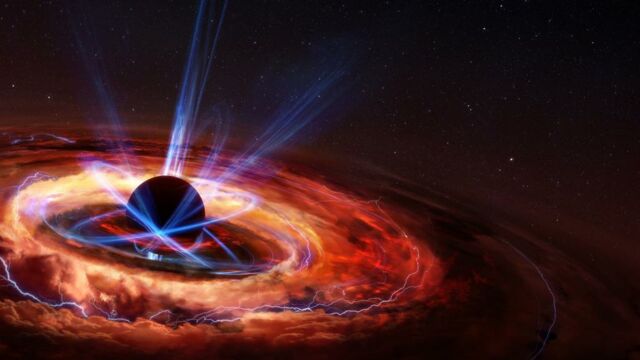What would happen if we fell into a black hole?

The release of blackhole pictures opened the door to many theories. One of them is, what would happen if we fell into one?
There are a plethora of theories about space. Of all celestial objects, black holes are surely the most fascinating. Their mysterious nature has kept us interested in all the possible theories around them. But what would happen if we were to come into contact with one of these celestial objects? Scientists might have an answer, however, it might not be what you imagined.
Discover our latest podcast
The 'spaghettification' of bodies
As explained by Britannica, a black hole is a region of space where gravity is such that it attracts everything (including light) towards a central point, called a singularity, which is paradoxically tiny.
More under this adMore under this adHave you seen the picture of the black hole at the center of our galaxy?
— NASA (@NASA) May 12, 2022
The image of Sagittarius A* (inset) was taken by @EHTelescope. Now see it in context with support from our @ChandraXray, Swift and NuSTAR observatories. Here's what the colors mean: https://t.co/Qkt3Qu3v1rpic.twitter.com/BONW7QZhsu
But what would happen if, you were sucked into this black hole? As you get closer, you will be pulled further and further in by the incredible gravitational force that a black hole exerts on its surroundings. It even increases very rapidly as the distance between you and the black hole decreases. So much so, that if you fell forward with your feet, they would be pulled much harder than your head. Your body would then begin to stretch and lengthen. According to Royal Museums Greenwich, this phenomenon is called 'spaghettification' and was coined by the astrophysicist Sir Martin Rees.
More under this adMore under this adCharles Liu of the American Museum of Natural History's Hayden Planetarium says that this one-way trip to the singularity would make us look like ‘toothpaste being pulled out of a tube’, as per Live Science.
The end game
This process happens extremely fast. In an article, Slash Gear explains:
If the brain went in first, it would break down so quickly into its basic atomic particles that the person probably wouldn't even know or understand what was happening to them. Talk about a bad trip.
These celestial objects seem to be powerful and might come across as chaotic. Neither time nor light seems to resist these wonders, which nevertheless do not shine by their infinitesimal size. This is why the picture of Sagittarius A, the milky way's supermassive black hole, caused such a stir in the scientific community and everywhere else as well.
More under this adMore under this adThis article is translated from Gentside FR.
Read more:
⋙ An asteroid 5 times bigger than the Empire State Building will graze the Earth